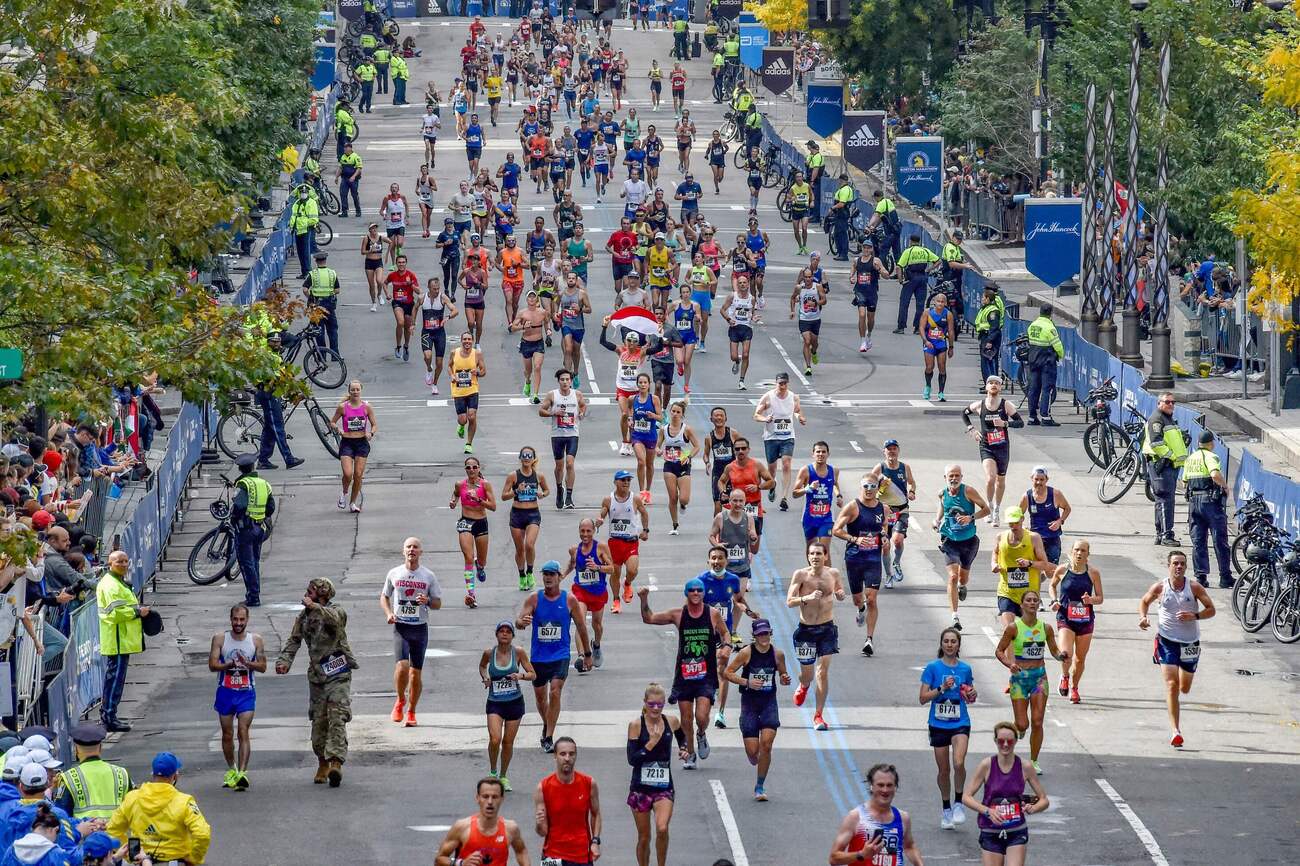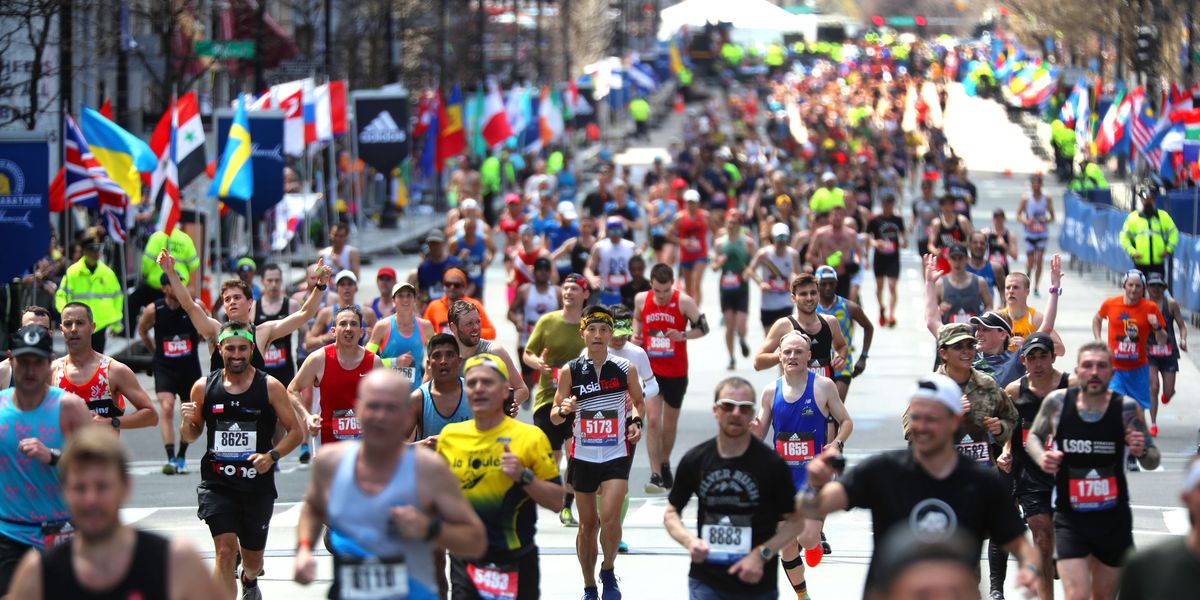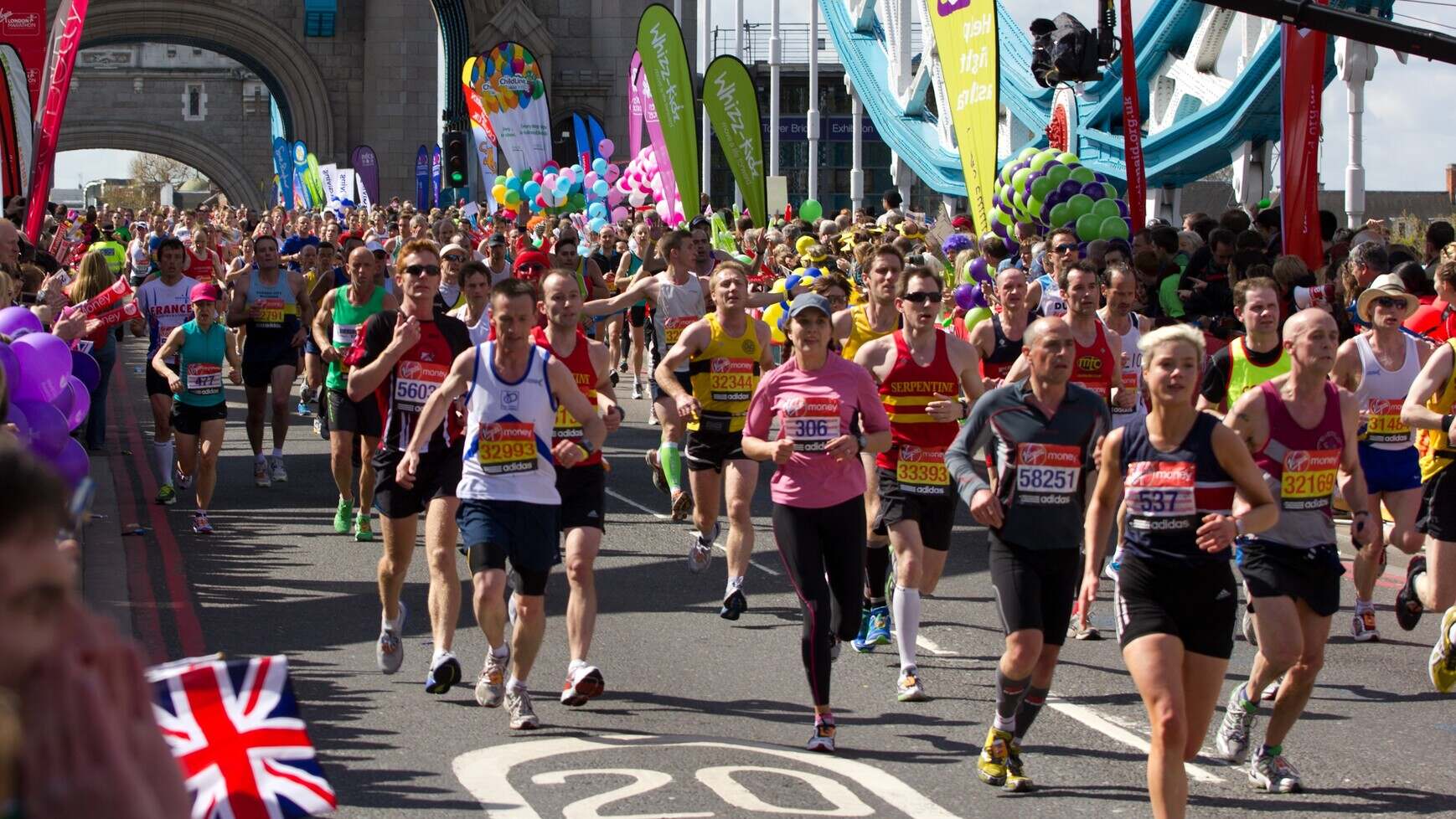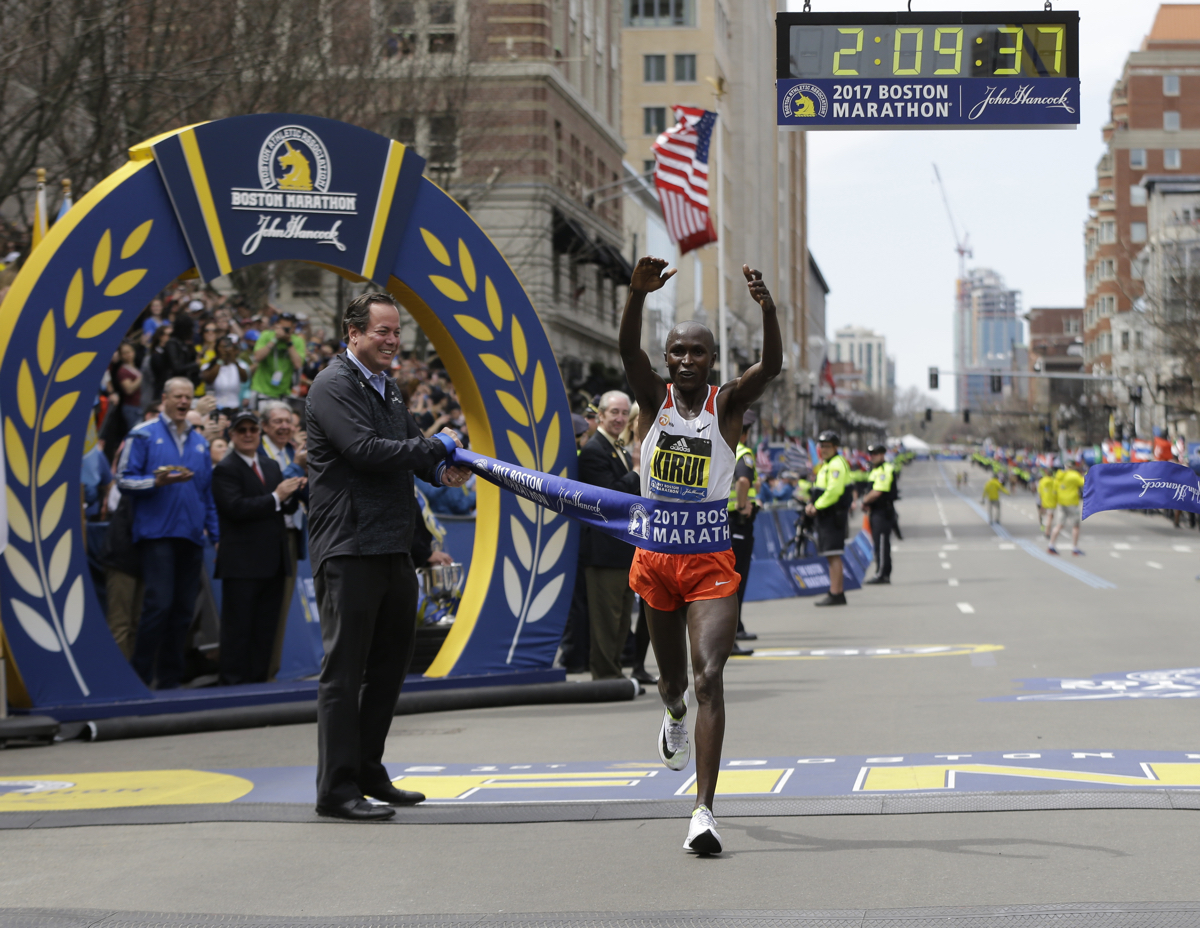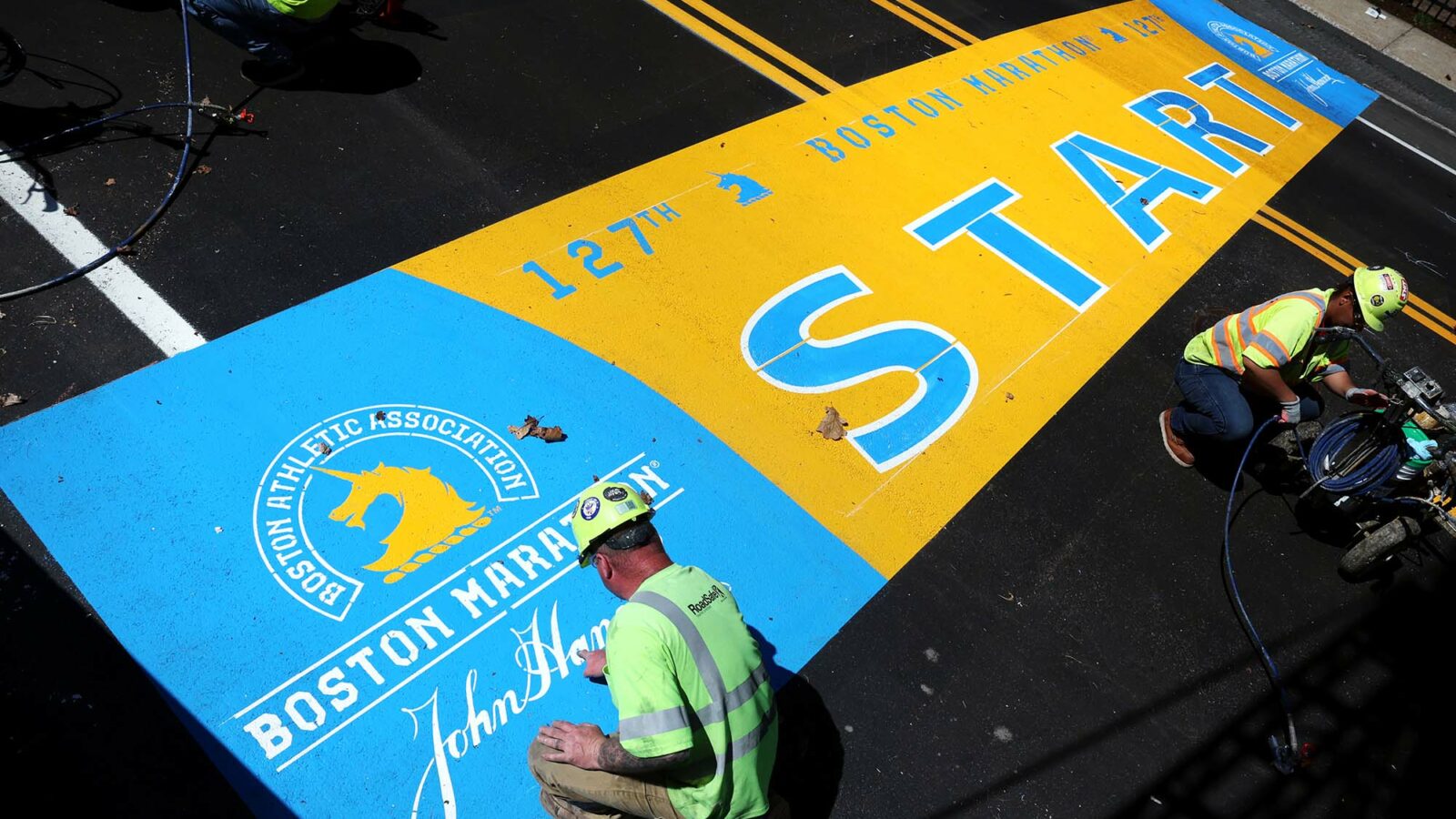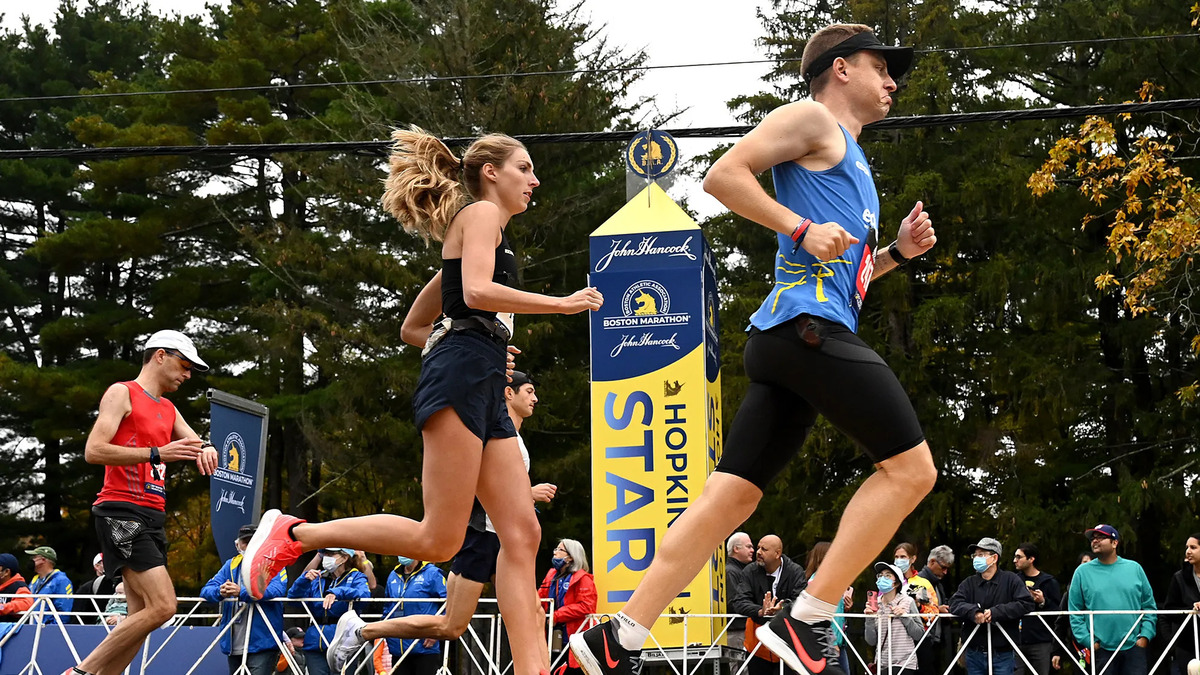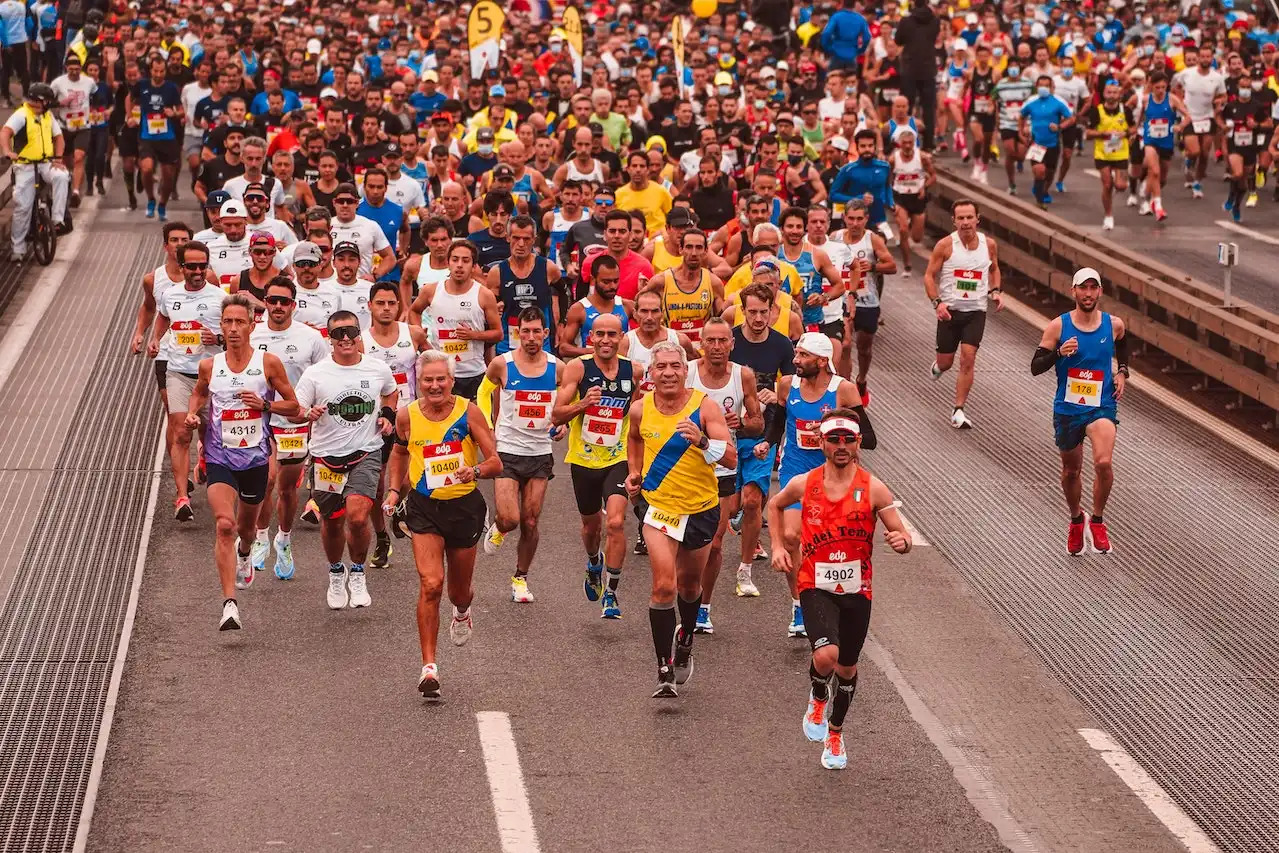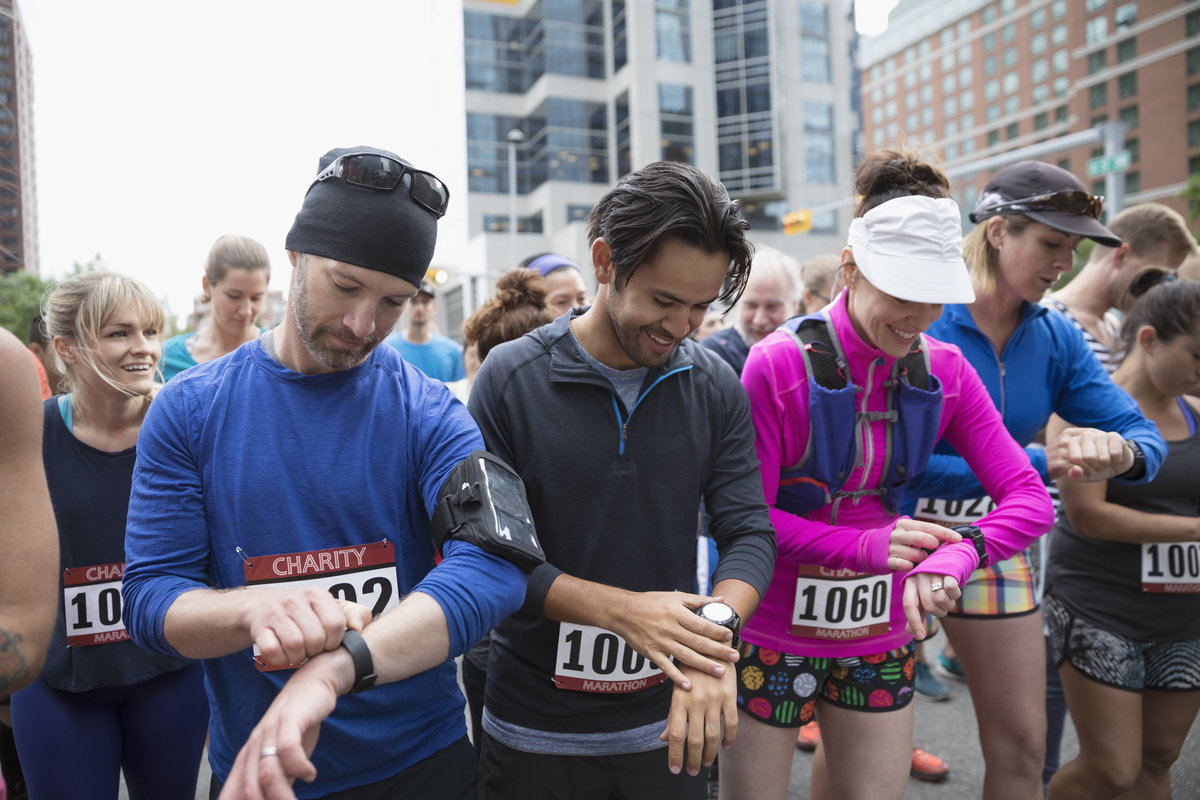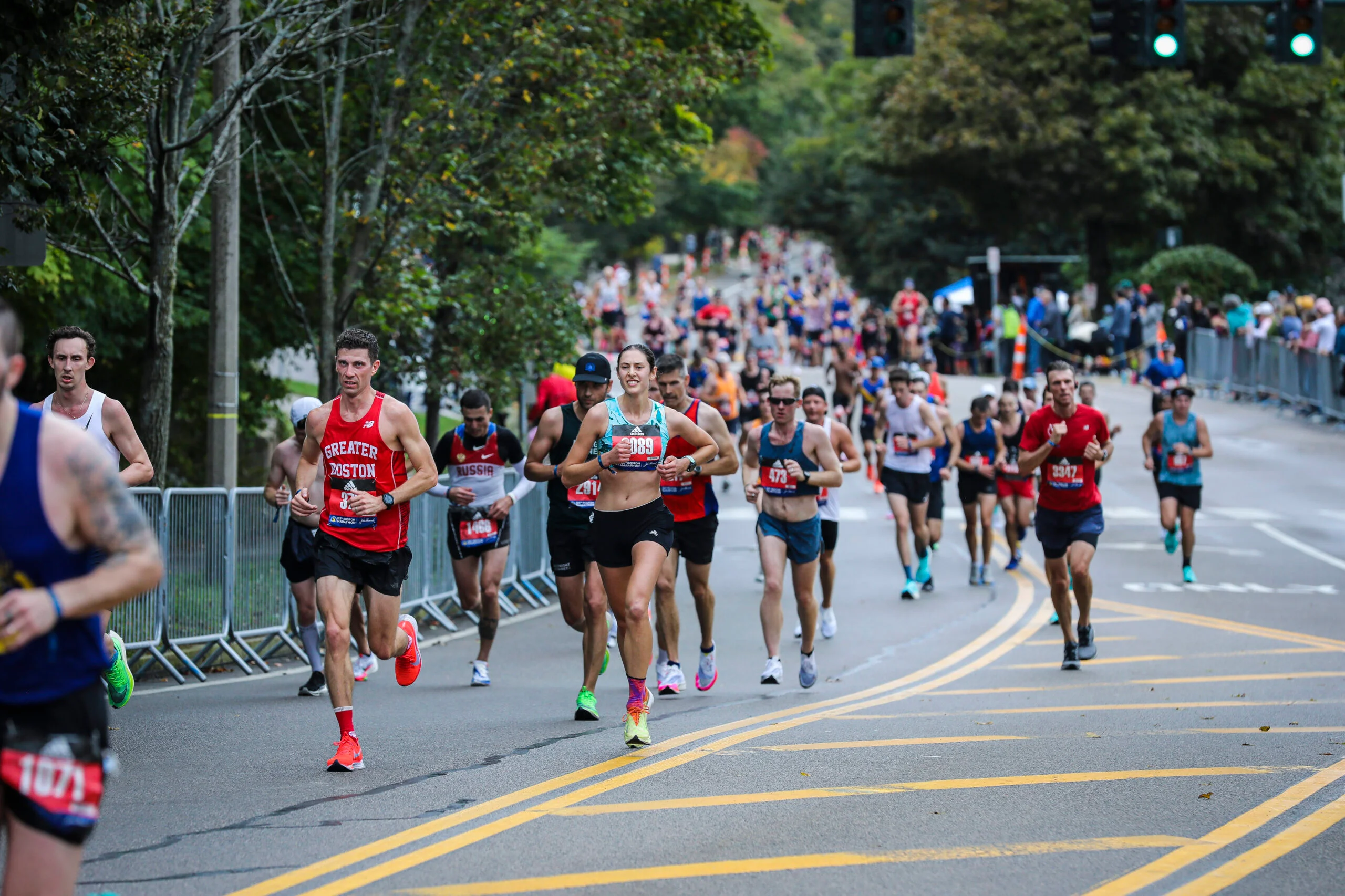

Featured
How Many Miles Is The Boston Marathon
Modified: January 2, 2024
Discover the distance of the Boston Marathon with our Featured article. Find out how many miles runners endure during this legendary race.
Introduction
The Boston Marathon is one of the most prestigious and iconic long-distance races in the world. It is an event that captures the spirit of athleticism, determination, and community support. Every year, thousands of runners from all around the globe come together to participate in this historic race, forming a bond that transcends borders and cultures.
Since its inception in 1897, the Boston Marathon has become a symbol of endurance and resilience. The annual event attracts elite athletes, amateur runners, and spectators alike, all excited to witness the remarkable feats of human athleticism. Whether it’s the challenge of conquering the course, the thrill of setting a personal best, or the joy of celebrating a milestone, the Boston Marathon holds a special place in the hearts of both runners and fans.
But have you ever wondered how many miles are covered in the Boston Marathon? The distance of the race is a crucial aspect that sets the stage for the physical and mental test that participants face. In the following sections, we will delve into the history of the marathon, explore the specific distance covered, discuss the factors that affect it, and highlight the significance of this long-standing tradition.
Brief History of the Boston Marathon
The Boston Marathon has a rich and storied history that dates back over a century. It all started in 1897, when the inaugural race took place with just 15 participants. The event was inspired by the success of the marathon race at the first modern Olympic Games, held in Athens, Greece in 1896. The Boston Athletic Association (BAA) saw an opportunity to bring the spirit of the Olympics to Boston and decided to organize a marathon.
The race quickly gained popularity and became an annual tradition. Over the years, the marathon has witnessed remarkable moments, showcasing the triumph of the human spirit. One such iconic moment is the story of Kathrine Switzer, who, in 1967, became the first woman to officially run the Boston Marathon, despite initial resistance from race officials.
The marathon has also seen its fair share of inspiring performances and world records. In 2011, Geoffrey Mutai from Kenya set a course record with a blistering time of 2 hours, 3 minutes, and 2 seconds. The Boston Marathon has consistently attracted world-class athletes, making it one of the most prestigious races on the international circuit.
However, the Boston Marathon’s history is not without its darker moments. The race was marred by the tragic events of April 15, 2013, when two bombs were detonated near the finish line, resulting in the loss of lives and numerous injuries. Despite this tragedy, the Boston Marathon showed its resilience and strength, with thousands of runners and spectators coming together to support and honor those affected.
Since that fateful day, the Boston Marathon has become a symbol of resilience and unity. The race organizers, participants, and supporters have shown unwavering determination to preserve the spirit of the event and ensure its continued success as a celebration of human accomplishment.
Distance of the Boston Marathon
The distance of the Boston Marathon is a key aspect that defines the challenge and allure of the race. Traditionally, a marathon is defined as a 42.195-kilometer (26.2-mile) long-distance race. The Boston Marathon follows this standard distance, and runners must complete the entire course to earn the prestigious Boston Marathon finisher’s medal.
The exact distance of the Boston Marathon is a result of historical factors. When the race was first established, the course distance was set at 24.5 miles (39.4 kilometers). However, during the 1908 London Olympic Games, the marathon distance was standardized to 26.2 miles (42.195 kilometers) to accommodate the royal family’s request to start the race from Windsor Castle so they could view the finish from the royal box in the stadium.
Since then, the 26.2-mile distance has been accepted and adopted as the standard for marathon races around the world, including the Boston Marathon. The route of the Boston Marathon takes participants through a challenging course that features rolling hills, particularly known for the infamous “Heartbreak Hill.” This elevation change adds to the physical demands of the race and tests the endurance of the runners.
The Boston Marathon course starts in Hopkinton, Massachusetts, and finishes in Boston’s Copley Square. It takes runners through several picturesque towns along the way, with enthusiastic spectators lining the route to cheer the participants on. The sense of camaraderie and support from the crowds plays a significant role in motivating the runners to push themselves to their limits and cross the finish line.
The distance of the Boston Marathon, combined with the course’s challenging nature, requires months of dedicated training and preparation. Runners must develop the stamina, strength, and mental resilience needed to conquer the 26.2-mile journey. Crossing the finish line of the Boston Marathon is not only a personal accomplishment but also a testament to the indomitable human spirit.
Factors Affecting the Marathon Distance
The marathon distance of 26.2 miles is considered a standard in most marathon races, including the Boston Marathon. However, several factors can affect the actual distance that participants experience during the race. These factors can vary from race to race and even from year to year. Understanding these factors is vital for both the organizers and the runners.
One of the main factors that can influence the marathon distance is the route and course design. Organizers carefully plan the course to ensure that it meets the required distance while also taking into consideration other factors such as elevation changes, road closures, and the overall runner experience. Any deviations from the designated course may lead to variations in the distance covered by participants.
Another factor that can affect the marathon distance is weather conditions. Extreme heat or cold can impact the performance of the runners and the overall pace of the race. In such instances, race organizers may need to alter the course or make adjustments to ensure the safety and well-being of the participants. These alterations can result in slight variations in the distance covered.
Furthermore, technological advancements in race timing and measurement have greatly improved the accuracy of marathon distances. GPS devices and electronic timing systems help ensure that the course is accurately mapped and measured. However, it is worth noting that there can still be minor variations due to factors such as signal loss or interference.
Lastly, individual factors can also affect the overall distance experienced by a runner. Running tangents, which involves taking the shortest possible route along corners and curves, can slightly reduce the distance covered. Conversely, weaving through crowds and interacting with other runners may lead to running slightly more than the official distance.
Despite these factors, marathon organizers strive to maintain consistency in the distance covered by participants. The Boston Marathon and other reputable races carefully adhere to international standards and guidelines to ensure fairness and accuracy. The focus is on providing participants with the best possible experience while maintaining the integrity of the race.
Importance of the Marathon Distance
The marathon distance holds a significant importance not only in the world of running but also in the broader context of human achievement and resilience. Here are several reasons why the marathon distance is revered and celebrated:
- A Symbol of Endurance: The marathon distance represents a test of physical and mental strength. Crossing the finish line of a marathon is a testament to the endurance and resilience of the human body and spirit. It showcases the capability to overcome challenges and push boundaries.
- A Personal Challenge: For many runners, completing a marathon is a lifelong goal and a personal challenge. The distance represents a significant milestone, motivating individuals to train rigorously, set goals, and push themselves beyond their limits. It is an opportunity to prove one’s capabilities and achieve a sense of personal accomplishment.
- A Celebration of Community: Marathons bring people together from all walks of life. The race becomes a unifying event where participants become part of a larger community of like-minded individuals, supporting and inspiring one another. The marathon distance fosters a sense of camaraderie and shared experience, creating lifelong friendships and memories.
- Charitable Endeavors: Many marathons, including the Boston Marathon, raise funds for charitable causes. The marathon distance serves as a platform to raise awareness and support for various organizations and community initiatives. Runners often use their marathon journey as an opportunity to make a positive impact on society.
- A Historical Tradition: The marathon distance has a rich historical significance, stemming from its origins in Ancient Greece. The Boston Marathon, as one of the oldest and most prestigious marathons, carries on this tradition and pays homage to the roots of the sport. It establishes a connection between the present and the past, honoring the legacy of those who have run before.
- Inspiration and Motivation: The marathon distance inspires people worldwide to set goals, embrace a healthier lifestyle, and overcome obstacles. The tales of triumph and perseverance associated with marathons serve as motivation for individuals to embark on their own fitness journeys, promoting physical and mental well-being.
The marathon distance embodies the pursuit of excellence, personal growth, and the triumph of the human spirit. It serves as a reminder that with determination and hard work, anything is possible. Whether as a participant or a spectator, experiencing the marathon distance is an awe-inspiring and life-changing endeavor that leaves a lasting impact on individuals and communities alike.
Conclusion
The Boston Marathon, with its iconic 26.2-mile distance, holds a special place in the world of running and beyond. It is a race that encompasses the virtues of endurance, determination, and community support. The history of the Boston Marathon is rich with stories of triumph, tragedy, and resilience.
Understanding the factors that affect the marathon distance, such as the course design, weather conditions, and individual factors, helps to appreciate the challenges faced by the participants. The marathon distance is a true test of physical and mental strength, pushing runners to their limits and beyond.
The marathon distance carries immense importance, serving as a symbol of endurance and human achievement. It represents a personal challenge for many, a chance to set goals and celebrate personal accomplishment. It also fosters a sense of community, as runners come together to support and inspire one another.
Furthermore, the marathon distance serves as a platform for charitable endeavors, raising funds and awareness for worthy causes. It celebrates historical traditions and inspires individuals around the world to embrace a healthier lifestyle and overcome obstacles.
The Boston Marathon, with its enduring legacy and global recognition, continues to captivate the hearts and minds of runners and spectators alike. It symbolizes the indomitable human spirit and showcases the power of perseverance and determination. Crossing the finish line of the Boston Marathon is a monumental achievement, leaving a lasting impact on both the participants and the communities involved.
In conclusion, the marathon distance of the Boston Marathon and other races stands as a testament to human potential, unity, and the pursuit of excellence. It is a celebration of individual achievement, a source of inspiration, and a defining symbol of the human spirit’s ability to overcome challenges and triumph.
